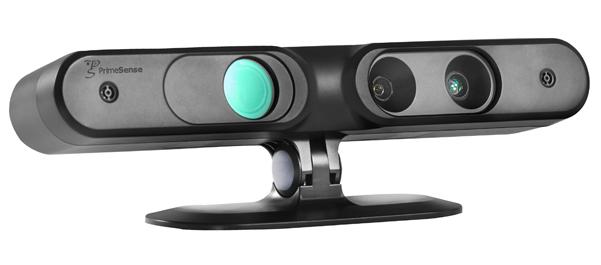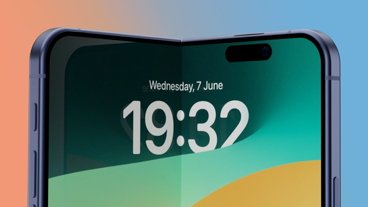Apple's heretofore puzzling buyout of Israeli sensor firm PrimeSense — which created hardware designed to "see" in three dimensions — now makes more sense in light of last week's acquisition of Metaio, a German software company specializing in augmented reality technology.
Apple snagged PrimeSense in late 2013 for $345 million, making it one of the largest deals in Apple's history. Until then, PrimeSense was known mostly for designing the first-generation Kinect for Microsoft.
Those trying to figure out what Apple might do with PrimeSense initially focused on Kinect-like applications. The consensus was that PrimeSense's technology would eventually make its way into the Apple TV, either to enable a new gaming use case or to replace the traditional remote control.
That could still be the case, but it seems that something more was brewing in Cupertino.
Picking up both PrimeSense and Metaio indicates big augmented reality ambitions at Apple.
Last week, Apple acquired Metaio, a well-known name in the augmented reality space. Metaio's technology powers most of the popular AR applications in the market today — Â Ikea's well-received virtual catalog, for instance, along with Audi's digital owner's manual and Ferrari's AR showroom app.
All of these applications work quite well in their current incarnations, but there are limitations to what AR can achieve when it's working with a flat plane. Depth can be inferred from images, of course, but more accurate three-dimensional mapping means more immersive AR.
As it happens, three-dimensional mapping was PrimeSense's reason for being.
Among other applications, PrimeSense technology was used by Qualcomm for early versions of its Vuforia AR platform and by iRobot for its Ava autonomous robot platform, which can navigate around new spaces independently.
One can fathom numerous uses for augmented reality at Apple — Â AR maps and games immediately spring to mind, as do more esoteric uses, like a new method of filmmaking. Imagine doing away with chromakeying — Â known colloquially as green screening — Â in favor of a system that can intelligently differentiate between actors and background objects, and is only available for use with Final Cut.
Pelican Technology CEO Kartik Venkataraman predicted a similar use case for his company's light field technology — Â which Apple is also exploring — Â in 2013.
"Instagram applies filters to the whole scene, but this allows you to apply filters to different layers of the scene," Venkataraman said. "That gives the potential for creating much more interesting filters."
No matter what product eventually materializes, it seems a safe bet that Apple hasn't spent hundreds of millions of dollars just to let us navigate Netflix by waving our hand in the air.
 Sam Oliver
Sam Oliver







-m.jpg)






 Charles Martin
Charles Martin
 Christine McKee
Christine McKee
 Wesley Hilliard
Wesley Hilliard
 Malcolm Owen
Malcolm Owen
 Andrew Orr
Andrew Orr
 William Gallagher
William Gallagher
 Sponsored Content
Sponsored Content








27 Comments
Everyone seems to be considering handhelds and ATV for these acquisitions' tech, but wonder if any can be used in cars? Windshield AR or an in-dash nav map are two things that come to mind?
Exactly what I was just thinking. Imagine a car with a windshield HUD featuring a 3D mapping system that could mark upcoming milestones? Alert you to road conditions? So much potential there.
An absolute gem for augmented reality and visual search technologies.
The synergy between Metaio and PrimeSense is obvious.
Very valuable for augmented reality maps, continuous search and 3D user interfaces.
Hmm, very interesting. I still hope to see PrimeSense sensors in future iPhones, iPads, Apple TV's, Apple Watches, and Macs. The potential is painfully obvious for programmers like myself. 3D mapping for images, 3D gestures, games, 3D face tracking, touchless "mouse" pointing, realtime 3D navigation of the immediate vicinity, collision detection, etc.
[quote name="PeterAlt" url="/t/186501/metaio-acquisition-brings-apples-primesense-pickup-into-focus#post_2729088"]Hmm, very interesting. I still hope to see PrimeSense sensors in future iPhones, iPads, Apple TV's, Apple Watches, and Macs. The potential is painfully obvious for programmers like myself. 3D mapping for images, 3D gestures, games, 3D face tracking, touchless "mouse" pointing, realtime 3D navigation of the immediate vicinity, collision detection, etc.[/quote] Yes! Also, the 3D filtering/layering of individuals and objects for video as an alternative to green screening and rotoscoping ... think of a photograph or video composed of manipulatable 3D objects -- after the fact. Lots of uses in sports, training, entertainment ,,, The same techniques could ne used to analyze and manipulate 3D medical images!